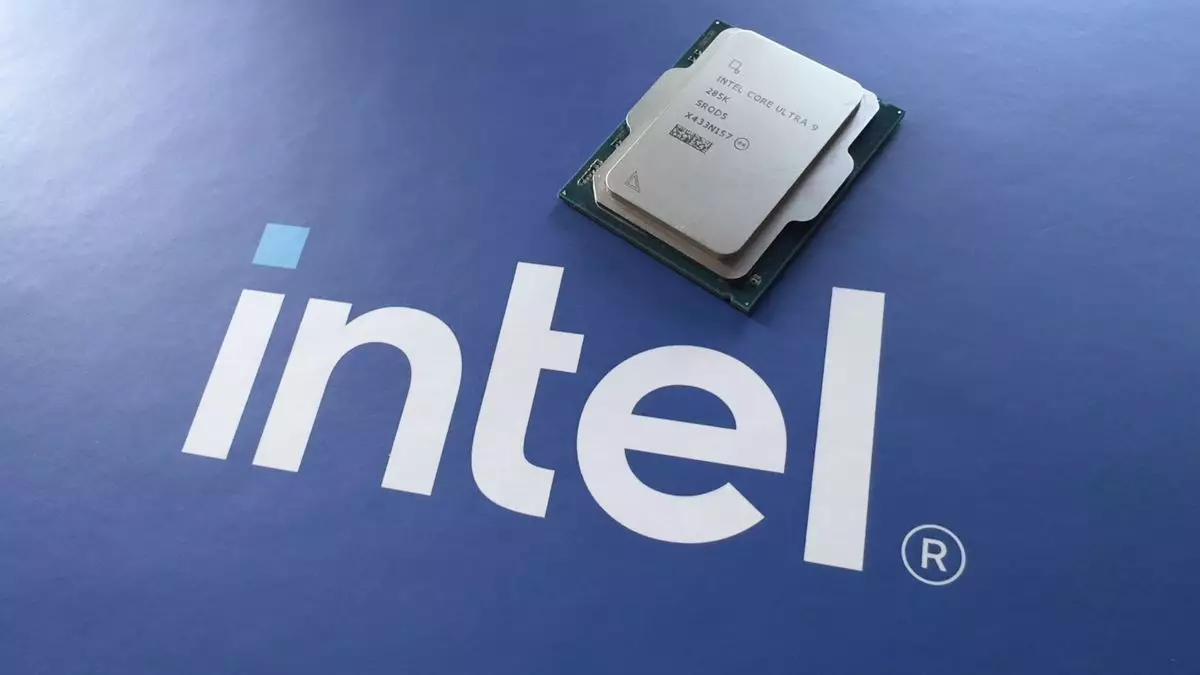Intel’s launch of the Arrow Lake Core Ultra 200S processor has not unfolded as the tech giant expected. In a recent interview, Robert Hallock, Intel’s Vice President and General Manager of Client AI and Technical Marketing, acknowledged significant discrepancies between the performance metrics released by Intel and those observed by reviewers. This admission is crucial as it reveals a gap between the company’s internal expectations and real-world assessments, suggesting a deeper problem within the new architecture. Although Intel hints at forthcoming performance fixes, skepticism prevails regarding the potential effectiveness of these adjustments.
The inconsistency between reported performance and real-world benchmarks raises questions about Intel’s testing rigor and validation processes. The admission that some of the performance issues stem from multifactor complications at the OS and BIOS levels further complicates the narrative. While Hallock refrains from divulging specifics, it is evident that the challenges are pervasive, and the implications for users and enthusiasts are significant. The promise of fixes may not suffice to bridge the expectations of potential consumers or improve standing against competitors in the CPU market.
In an effort to test the limits of performance, I engaged in extensive overclocking experiments with the Core Ultra 200S, employing advanced RAM configurations and exploring various clock adjustments. The results were illuminating yet disappointing. Despite achieving an 11% increase in cache ring clock, a 15% boost in uncore clock, and a 19% rise in die-to-die clock, the overall performance lift was marginal. The most notable finding of only a 2% gain in average frame rates, coupled with a troubling 7% decline in 1% low figures, paints a stark picture of the processor’s gaming capabilities.
Games like Cyberpunk 2077 experienced a moderate improvement of around 5%, but the increased power draw—topping 15%—is a concerning trade-off for gamers seeking to maximize performance. The clear discrepancy is present in Total War: Warhammer 3, emphasizing the potential for substantial performance variability even within the same gaming genre. The issues range from thermal throttling to inefficiencies in how the architecture handles gaming workloads, thus exacerbating challenges in delivering consistent and competitive performance.
Intel’s Application Optimization (APO) tool, designed to streamline thread management for its hybrid architecture, holds promise as a potential performance booster. However, my testing revealed little impact when leveraging APO with prominent titles like Cyberpunk 2077. This raises questions about the efficacy and necessity of such software moving forward. While some performance enhancements were noted in games like Metro Exodus and Total War: Warhammer 3, the lack of significant improvement in flagship titles reinforces the notion that Arrow Lake’s design might not capitalize on modern gaming demands.
With major competitors like AMD making strides with their Zen 5 architecture, Intel’s emphasis on fine-tuning legacy software solutions may not adequately address the architectural deficiencies of Arrow Lake. The reliance on external software optimizations could indicate a deeper-rooted issue—rather than focusing solely on hardware, Intel may need to reassess its overall approach to gaming performance.
The Broader Landscape: Competing with AMD’s Progress
As the industry watches, Intel’s challenges with Arrow Lake present a contrasting narrative against AMD’s recent successes, especially with its Ryzen 7 9800X3D processor. The abundant features and the remarkable sales performance of AMD’s latest offerings clearly demonstrate the shifting dynamics of the CPU market. Intel must grapple with the reality of improving Arrow Lake’s competitiveness while also acknowledging that the latency issues associated with chiplet designs are well-known and have been successfully addressed by AMD over multiple generations.
The continuing evolution of micro-architectures, power efficiency, and thermal performance will be integral for Intel to regain its footing. While the introduction of fixes may assist with user experience in prebuilt systems, they must do more than merely mitigate performance deficits; they must propel Arrow Lake into a competitive realm where it stands strong against its rivals.
Looking Forward: A Hope for Improvement
Despite the unenviable position Arrow Lake finds itself in, there exists a degree of hope for the future. Early adopters and tech enthusiasts alike are rooting for Intel to rise from these challenges, especially given its historical prominence in the CPU market. The forthcoming Windows and BIOS updates could yield significant improvements, but there remains a lingering question: will those changes be enough to elevate Arrow Lake beyond its current limitations?
The Arrow Lake Core Ultra 200S processor arrives wrapped in both potential and pitfalls. It is clear that the road ahead for Intel will require rigorous engineering, robust validation, and an unwavering commitment to quality to ensure that such oversight does not follow them into future product releases. The stakes are high, and tech enthusiasts will be watching intently as Intel navigates this pivotal juncture in its storied history.

